When Tohoku earthquake and tsunami hit Fukushima, Mr. Haneda wanted to reduce radiation exposure at a local ground golf course. Activated EM-1(AEM) was abundantly sprayed over te course again and again. The result showed the reduction in the radiation readings. Then Mr. Haneda was positive to apply AEM for his rice paddy that was also contained radioactive substances.
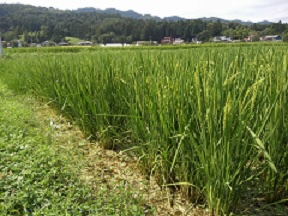
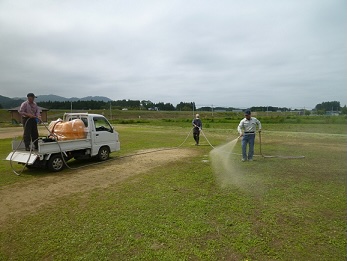
Spraying AEM on the ground golf course
At the time when the severe earthquake and massive tsunami hit the Pacific coastline of eastern Japan, Mr. Kaoru Haneda, a representative of EM Baba Group, was also the head of a ward in Minamisoma city, Fukushima. Mr. Haneda read an article about EM application for radioactive substances and contacted EM Research Organization (EMRO) seeking a way to reduce radiation exposure at a local ground golf course. Baba Group was established soon after that.
First, he held a small information session for local residents. In spring 2012, 10 of them who had an interest in using EM at home and for gardening joined the group and started using an EM・1 activation unit and tanks supplied by the project endowment funds which is provided from all over the world.
The learning curve was steep for the first few months because all the work including making and spaying AEM (Activated EM・1) was new to them. However, as they got used to the procedure, they could make a stable quality and quantity of AEM, spray it on the golf field and use it at the members’ homes on a regular basis. The radiation readings on the field reduced from 1.3μSv/h to 0.6μSv/h in 5 months after the first application.
Mr. Haneda was already growing rice organically before the quake and participated in the demonstration experiment held by the city government in 2012 to test the suppression effect of AEM on the transfer of radioactive cesium.
The result showed that the radioactive cesium level for brown rice grown in the rice paddy that applied AEM during the experiment was reduced to one-fourth. After this result, he increased the AEM application area to 5ha in 2013. Although they still have a weed problem, they are confident about the effect of AEM and the growth of the paddy.
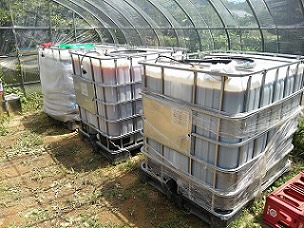
AEM tanks were placed at Mr. Haneda's house in 2013 - after he started spraying AEM also on his field, he had less crop damage by wild boars.
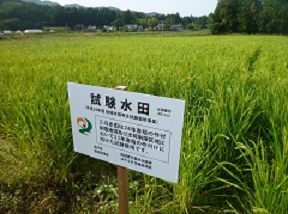
EM application on an experimental paddy field in 2012.
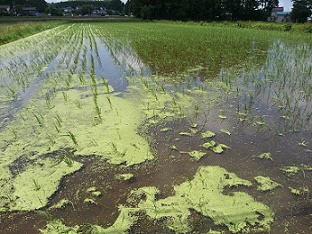
Paddy field right after the rice planting (2013). 150L of AEM per 1,000m² was applied five times.
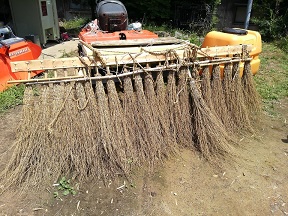
Instead of herbicides, a handmade weeding machine is used to control weeds like monochoria vaginalis.
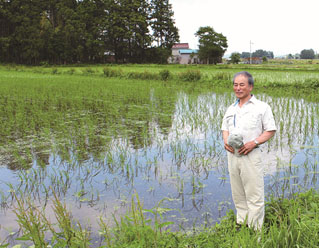
Mr. Haneda very positive in applying EM for his rice paddy
2016.8.9 Updated